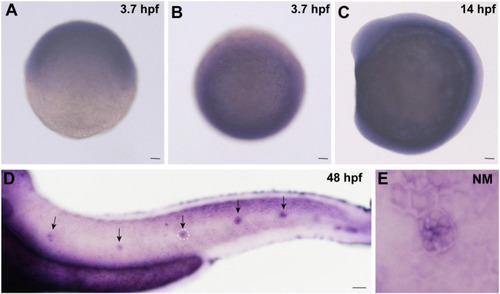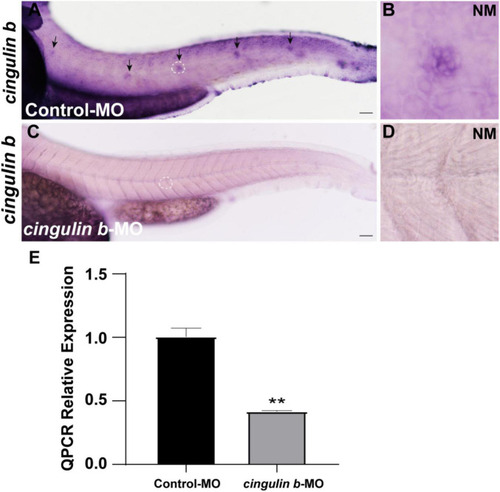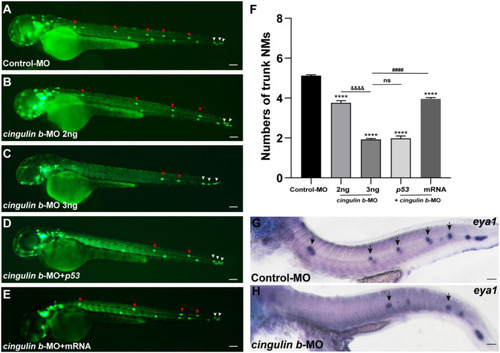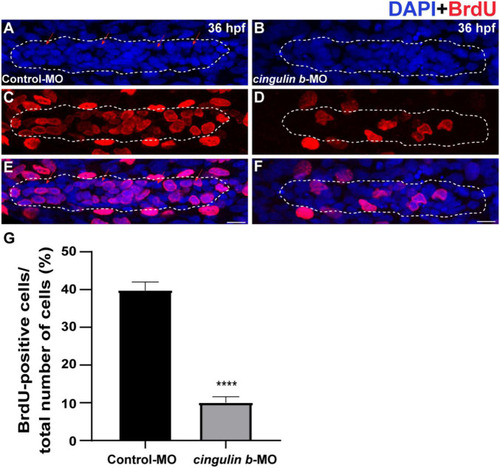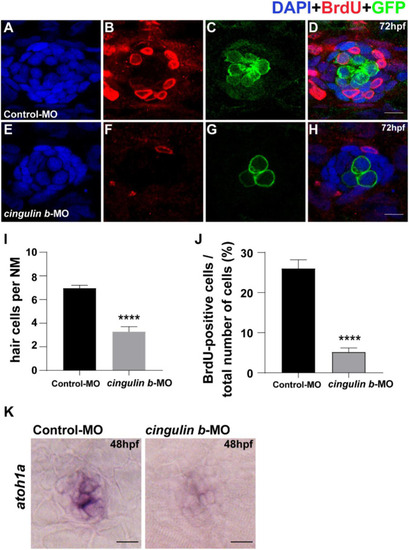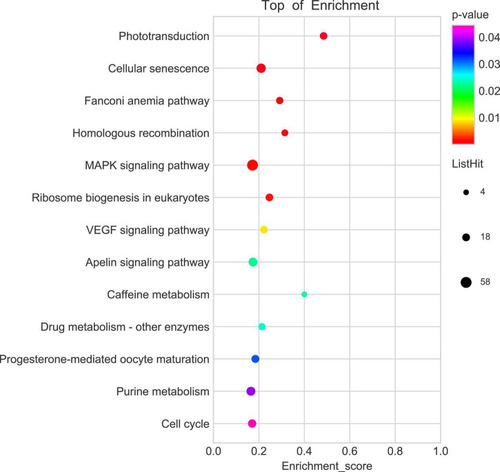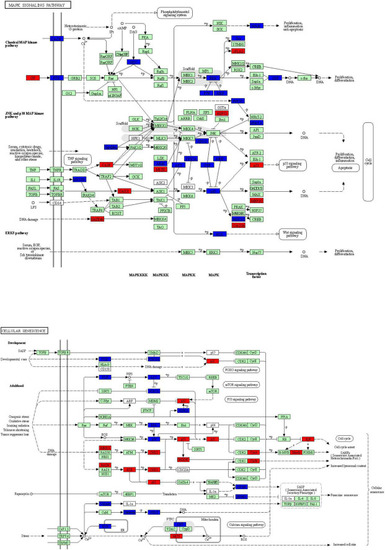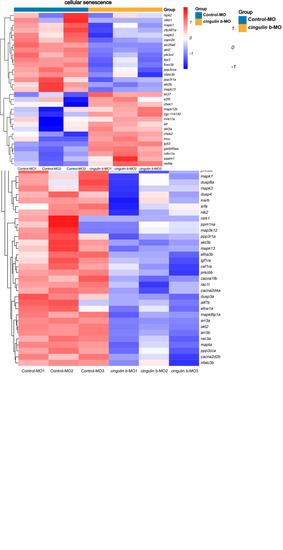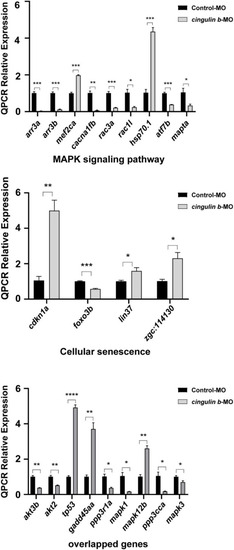- Title
-
Cingulin b Is Required for Zebrafish Lateral Line Development Through Regulation of Mitogen-Activated Protein Kinase and Cellular Senescence Signaling Pathways
- Authors
- Lu, Y., Tang, D., Zheng, Z., Wang, X., Zuo, N., Yan, R., Wu, C., Ma, J., Wang, C., Xu, H., He, Y., Liu, D., Liu, S.
- Source
- Full text @ Front. Mol. Neurosci.
|
Expression of |
|
The efficacy of |
|
Inhibition of |
|
The proliferative cells in the PLL primordium are severely decreased while downregulation of PHENOTYPE:
|
|
Knockdown of EXPRESSION / LABELING:
PHENOTYPE:
|
|
KEGG enrichment analysis screens out top 13 pathways which are highly differentiated expressed between controls and |
|
The key KEGG pathways: MAPK signaling pathway and cellular senescence signaling pathway. The red nodes represent upregulated DEGs in |
|
Heatmap analysis of MAPK signaling pathway and cellular senescence signaling pathway in comparison between Control-MO embryos and |
|
The relative mRNA levels of the indicated genes from MAPK and cellular senescence signaling pathways were normalized to the GAPDH level as determined by qRT-PCR. The results are recorded as mean ± SEM from three independent experiments ( |

